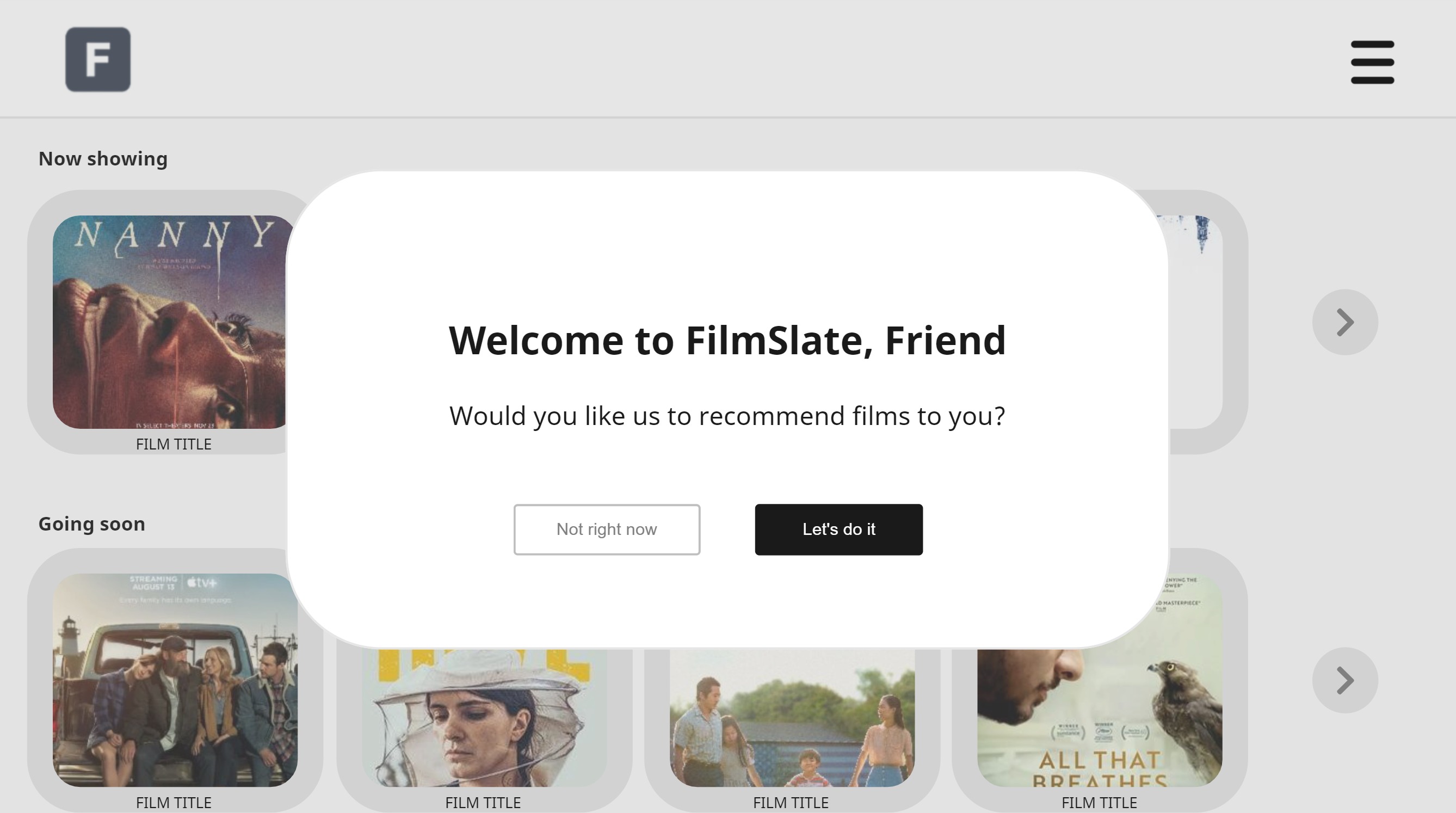During my product management course at King's College London, I was given the task of improving the onboarding process of Filmslate, a conceptual indie film streaming service. During the project, I worked across the product lifecycle through ideation, prototyping, launching, and iteration processes.

Filmslate is a fictitious indie film streaming service born out of a SubStack community that uploaded a new film every day with the selections curated by the team. As part of the King’s College London Product Management course, I followed the product lifecycle of the startup through identification of business outcomes, ideation, validation, prototyping/building, launching, evaluating and iterating on the products.
From user research, users across all segments had complained that the onboarding process failed to respect their film knowledge and they struggled to find content that they wanted to watch.
The user journey was mapped through onboarding to highlight their struggles and personas generated.
I created user stories based on the three user segments Indie Addicts, Cinephile and Genre Fan
Each of the user groups shared a common desire to easily find films tailored to their tastes and preferences to either share with others or learn more about the stories behind the film. These feed into the Value Proposition Canvas below to show what can help FilmSlate to stand out from the competition.
I created a user persona to highlight the user’s struggles, focusing on the largest segment, Indie Addicts. This highlighted the pain points and opportunities to the team, helping to build empathy with our users and their problems.
Looking into competitors and their offerings, I investigated their scale and any reviews to see if there were any areas where users felt like there were issues.
Two competitors, Mubi and Indieflix, did not offer users the opportunity to receive tailored content and had limited search options, making it more challenging to quickly find films meeting users’ preferences – films could be lost in an infinite scroll and the selection menu could seem overwhelming. Mubi is the current market leader with 12 million members and hosts an in-platform forum, for users to engage and share with each other. Indieflix finds its niche in the market by hosting social impact films and fostering film festival partnerships.
FilmSlate differentiates from both with its human curated film selection, but users still got frustrated finding what they like. Thus, to improve its product market fit, FilmSlate needed to ensure that its audience could find films that they want to watch efficiently.
The current pricing structure is in line with Mubi, though sits higher than Indieflix whose library partnerships will likely subsidise access for users (free for some library patrons).
Following ideation on content personalisation and improving onboarding, ideas were prioritised based on urgency and value to the customer and business
From this, I created the low-fi prototype and undertook usability testing and iterated on the design when issues became apparent.
Following the prototype, I created metrics by which the success of the feature could be measured:
Following the prototype, I created metrics by which the success of the feature could be measured:I also created a roadmap showing the work schedule, current goals and feature release dates; these were in line with the business requirements and the expectations of the founders. Items were prioritised balancing the needs of the business and the user.
Following further usability testing, the prototype was iterated on to a higher fidelity. Users complete a questionnaire that allows them to highlight their film preferences and then display a custom view of films in the catalogue in line with their preferences. This would also enable users to be assigned into segments upon sign-up. Initial prototypes were tested and validated with users and the MVP adapted in line with findings. Further testing showed that users would find the feature to be valuable in helping them find what they want to watch, faster.
The goal with the feature was to provide a more personalised and engaging platform for FilmSlate’s users. By gathering feedback across a diverse range of participants, we ensured that we created a valuable feature for as wide an audience as possible. Future tests will need to investigate the accuracy of the film suggestion – this is not currently possible with the mid-fidelity prototype.
Testing Hypothesis: We believe that users will be able to complete the questionnaire and receive film recommendations.
A soft launch was elected as the best option for the personalisation feature, to allow for further optimisation and iteration with user feedback. The feature would only be rolled out to a small section of users to ensure high quality when ready for a full scale release to all users.
The product positioning statement for FilmSlate fed into the GTM strategy and highlighted position in the market against competitors:
FilmSlate is a streaming provider for independent film enthusiasts, offering a rotating collection of thirty handpicked films, with easy to find recommendations, personalised to the user, setting us apart from other indie film streaming services that provide an overwhelming number of films and have limited search functionality, making it difficult to find what to watch.
This makes FilmSlate the discerning and exciting choice for film lovers seeking the best in independent cinema.
Using the user research, I also identified areas where FilmSlate’s messaging could speak to users in specific segments most impactfully, by engaging in discussions where they were most active.